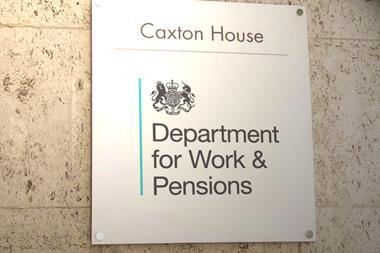With the consultation on the future of defined benefit (DB) schemes and the public sector consolidator operated by the Pension Protection Fund (PPF) closing this week, industry experts say the lifeboat could play a “key role” in the endgame for DB schemes.
In a response to the Department for Work and Pensions (DWP) consultation, consultants at LCP argued that PPF could have a “key role” to play in the endgame for DB pension schemes.
However, LCP said that any new regime would need to play to PPF’s strengths, ensuring that it met needs not currently served by the market.
It said that for larger and stronger schemes, the PPF being being able to provide 100% cover for member benefits through an opt-in super levy would give trustees confidence that benefits were fully protected. It could also enable those schemes to run on, invest in a wider range of productive assets, and produce surpluses to the benefit of DB members and sponsors, as well as potentially the DC generation and the wider economy.
LCP and the Tony Blair Institute for Global Change both floated proposals to position the PPF as a consolidator in May 2023.
In its consultation response, SPP agreed that the proposals for a 100% underpin for those pension schemes which agree to pay a ‘super levy’ would give assurance to trustees seeking to run on their pension schemes and potentially return surplus to the employer.
However, it said that an annual super levy of 0.6% of buy-out liabilities would be “prohibitively expensive” – especially as it would only be accessible to well-funded schemes with strong covenants – leading to very low take-up from schemes.
The SPP also expresses concerns about the implementation of such an underpin as without due care it ”may encourage trustees and sponsors to take unnecessary risk”.
PPF as public sector consolidator
For smaller and weaker schemes, LCP said that PPF could have a “market stabilising role” to play in improving outcomes for members of smaller schemes.
“A public sector consolidator, focused on smaller schemes, could help to reduce governance costs and improve investment strategies, increasing the chances of pensions being paid in full,” the firm said.
LCP suggested the consolidator could focus on schemes with liability values under around £10m, but with the ability to take on larger schemes subject to a ‘gateway test’ designed to mitigate the risk of unfair competition with superfunds or insurance buyout.
TPT Retirement solution agreed it may be beneficial to have a public consolidator focused on the smaller end of the market for those schemes that are unable to access commercial consolidation solutions.
It said: “All too often smaller schemes are not of interest to the commercial providers and are weighed down by disproportionately high advisory fees.”
However, TPT urged that any public consolidator must fit within the existing framework and not negatively impact the commercial market.
TPT recommended that benefit standardisation should be available across the industry though this would clearly need to be regulated within a clear legal framework.
It said: “Allowing this would also enable smaller schemes to access consolidation opportunities.
‘Exciting times’
Jonathan Camfield, partner at LCP said that these are “exciting times” in the DB landscape, and the PPF “could have a crucial part to play in making the most of current opportunities”.
He said: “For large well-funded schemes, the option of full 100% PPF protection could give trustees comfort and encourage such schemes to run on and invest in a wider range of productive assets, generating surpluses to benefit members and sponsors.
“For the smallest schemes, a public sector consolidator could improve outcomes, but its place in the market will need to be carefully judged to reduce the risk of unfair competition with other options already available to schemes.”
Surplus extraction
The consultation also looks at how the government could enable DB surplus extraction in the interest of members and for sustainable investment in the wider economy.
Camfield said that the government “must be bold” in reforming the rules around DB surpluses, alongside improved member protection, to make sure that pensioners, UK business and the wider economy can make the most of the assets which have been built up over decades of careful stewardship of DB funds”.
David Lane, chief executive at TPT Retirement Solutions, said the proposals to give schemes more flexibility to access surpluses would be welcome.
He said: “These reforms could create a much greater incentive for schemes to consider run-on, serving as an alternative solution to an insurer buyout.”
This, he said, could benefit trustees, sponsors, and members by providing more endgame options.
Meanwhile, running-on to access scheme surpluses could lead to improved member benefits and increased business investment.
He continued: “For schemes with their eyes on the endgame but still keen to derisk, using a DB scheme consolidation option could be a good approach.
“It is important the industry focuses on continuous innovation, an example of this could be giving DB consolidators the ability to standardise benefits through a carefully regulated process. This would drive innovation in the consolidation market and allow many more commercial options to proliferate.
“Creating a public consolidator that could standardise benefits, but not allowing commercial operators to use this mechanism would present an unfair advantage.”
Read the digital edition of IPE’s latest magazine
























